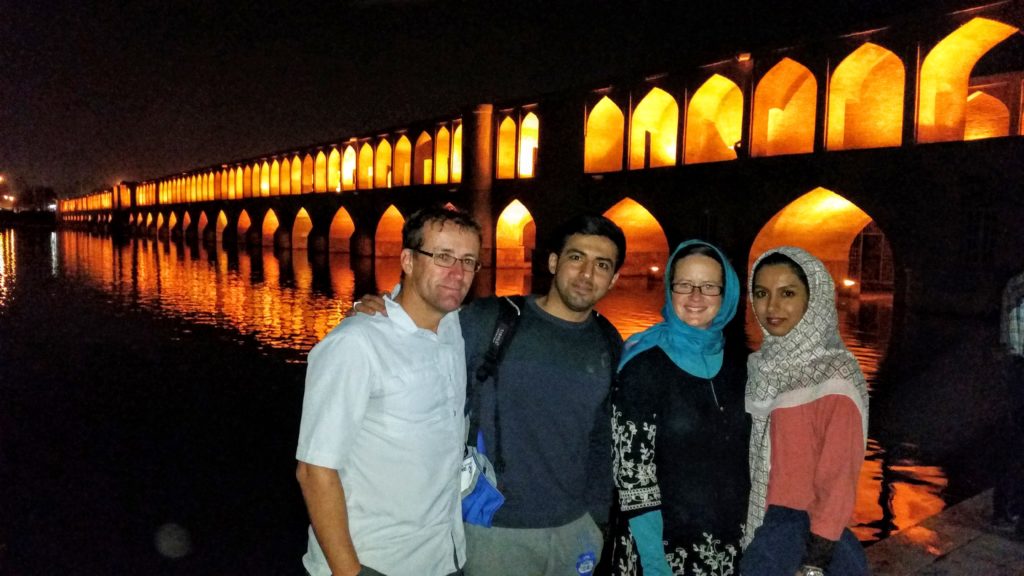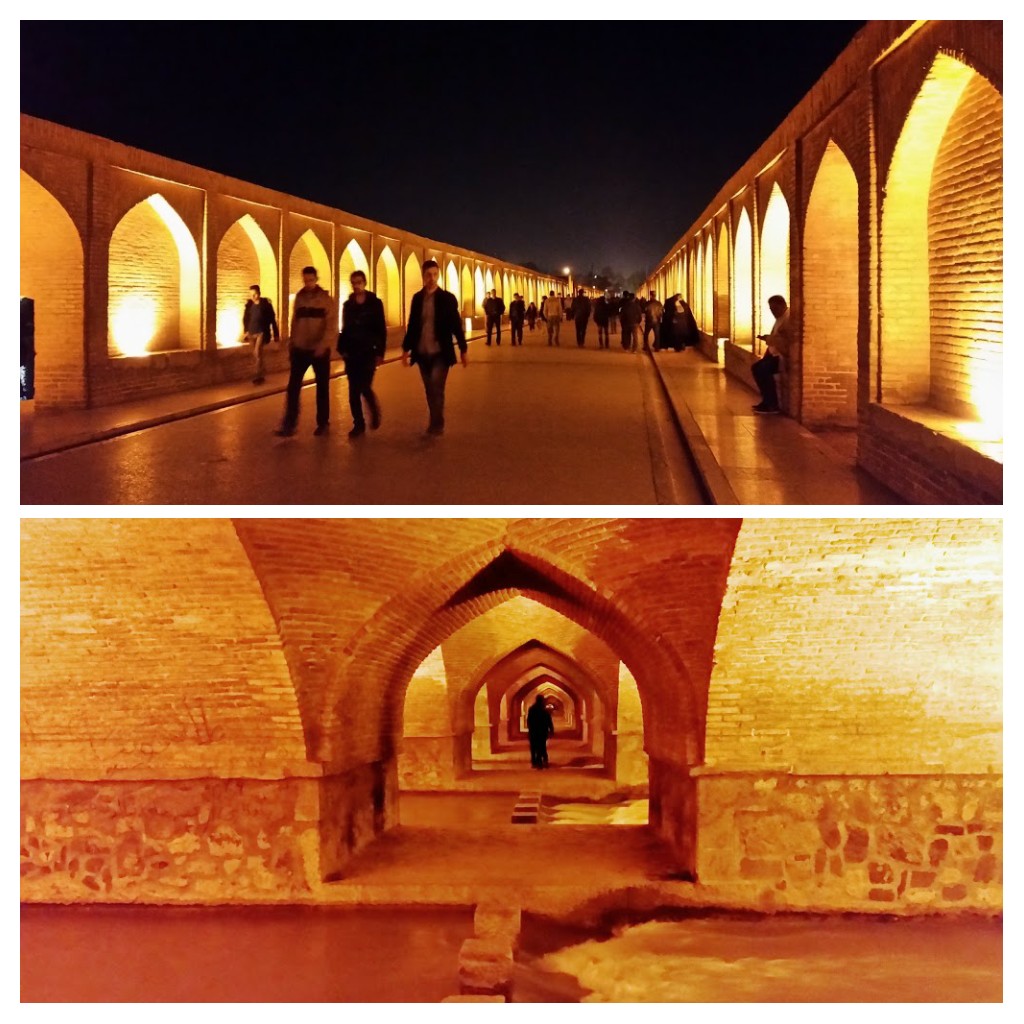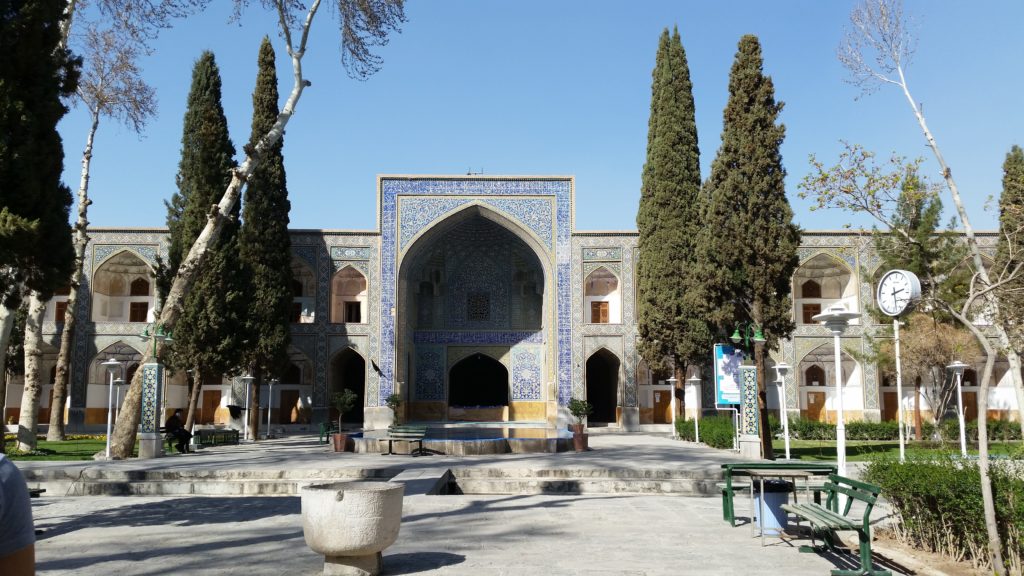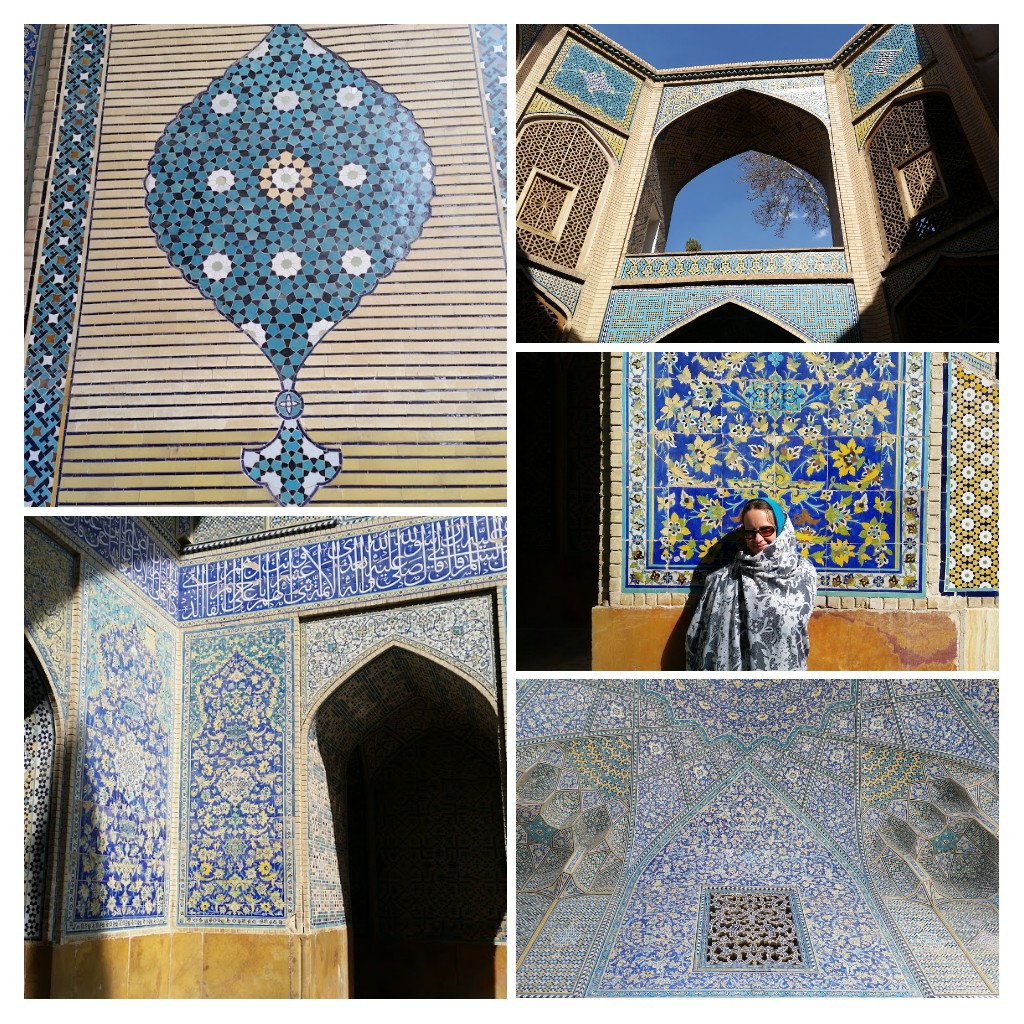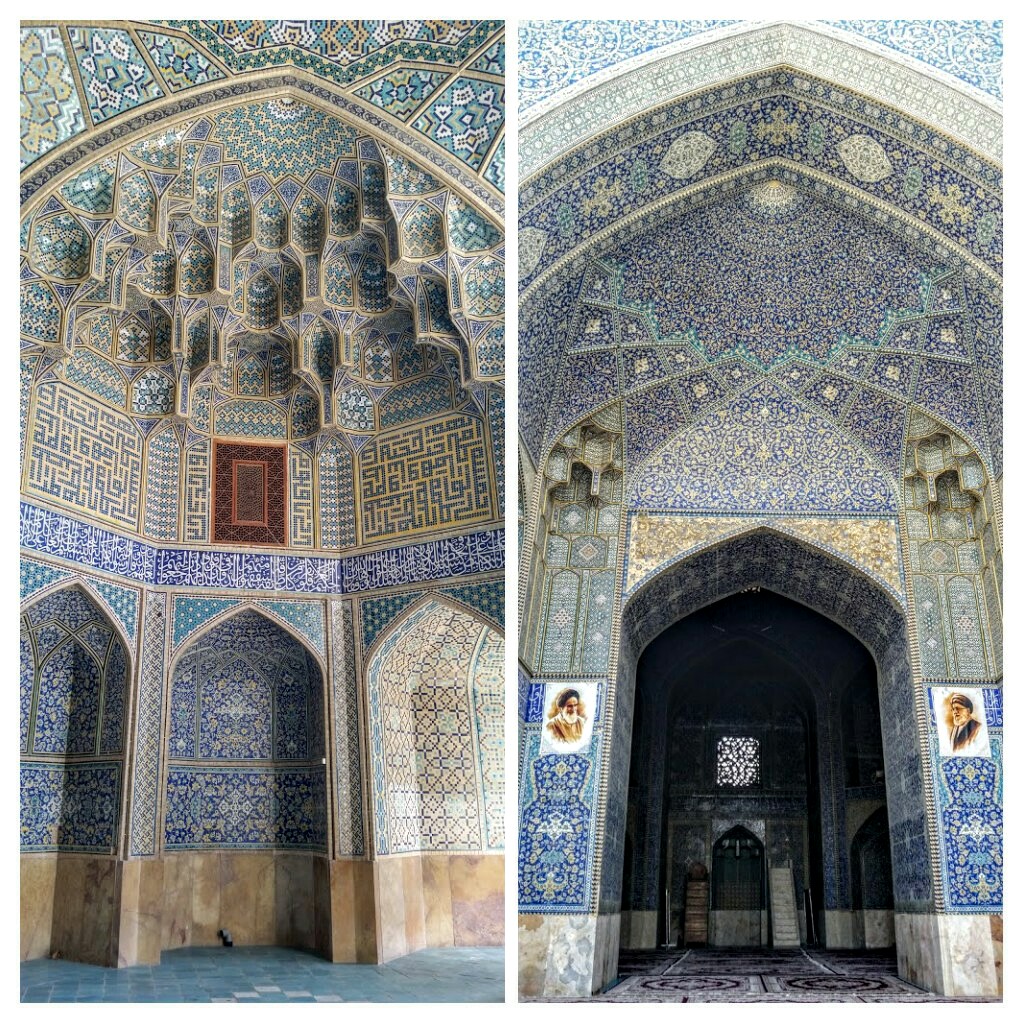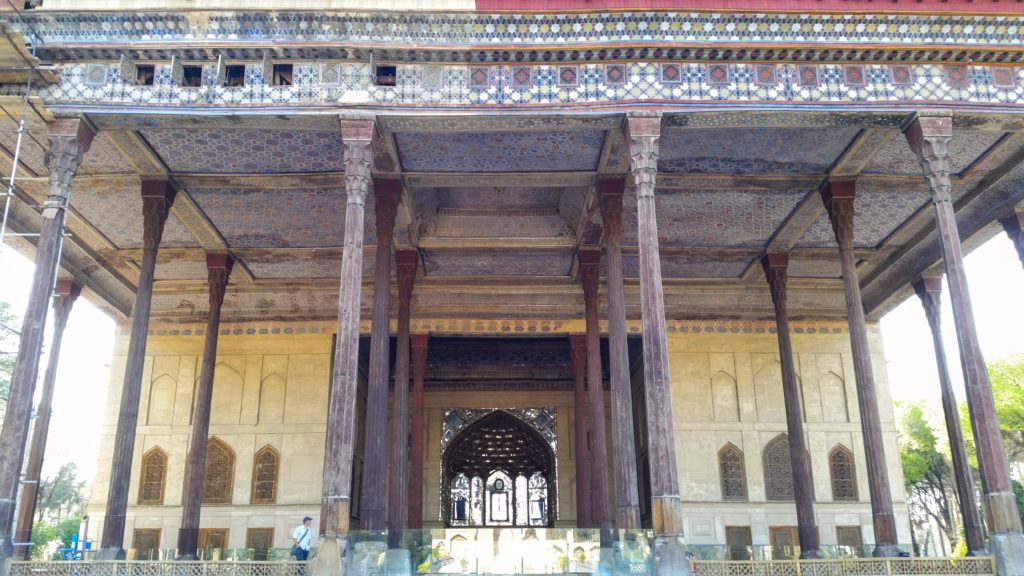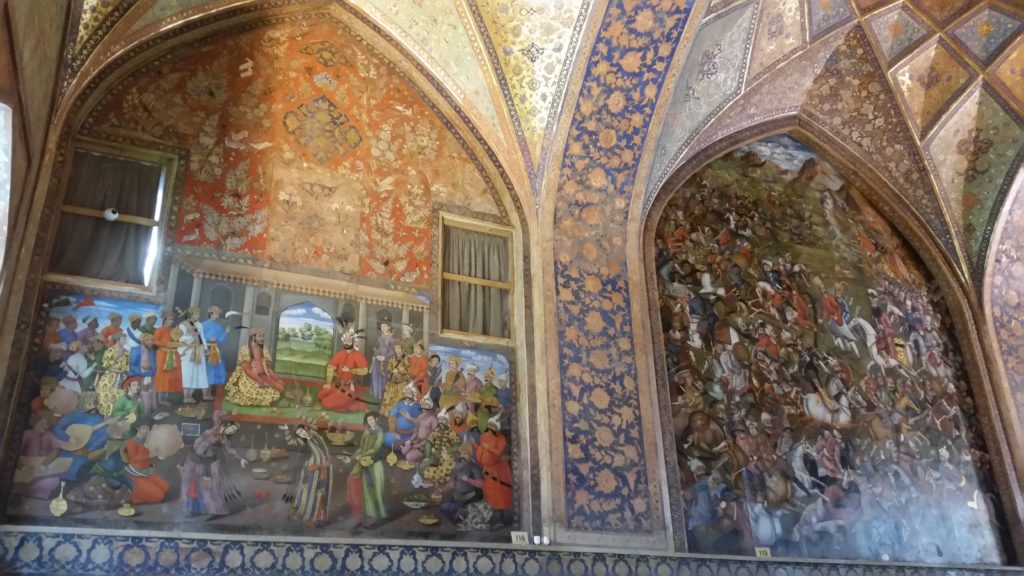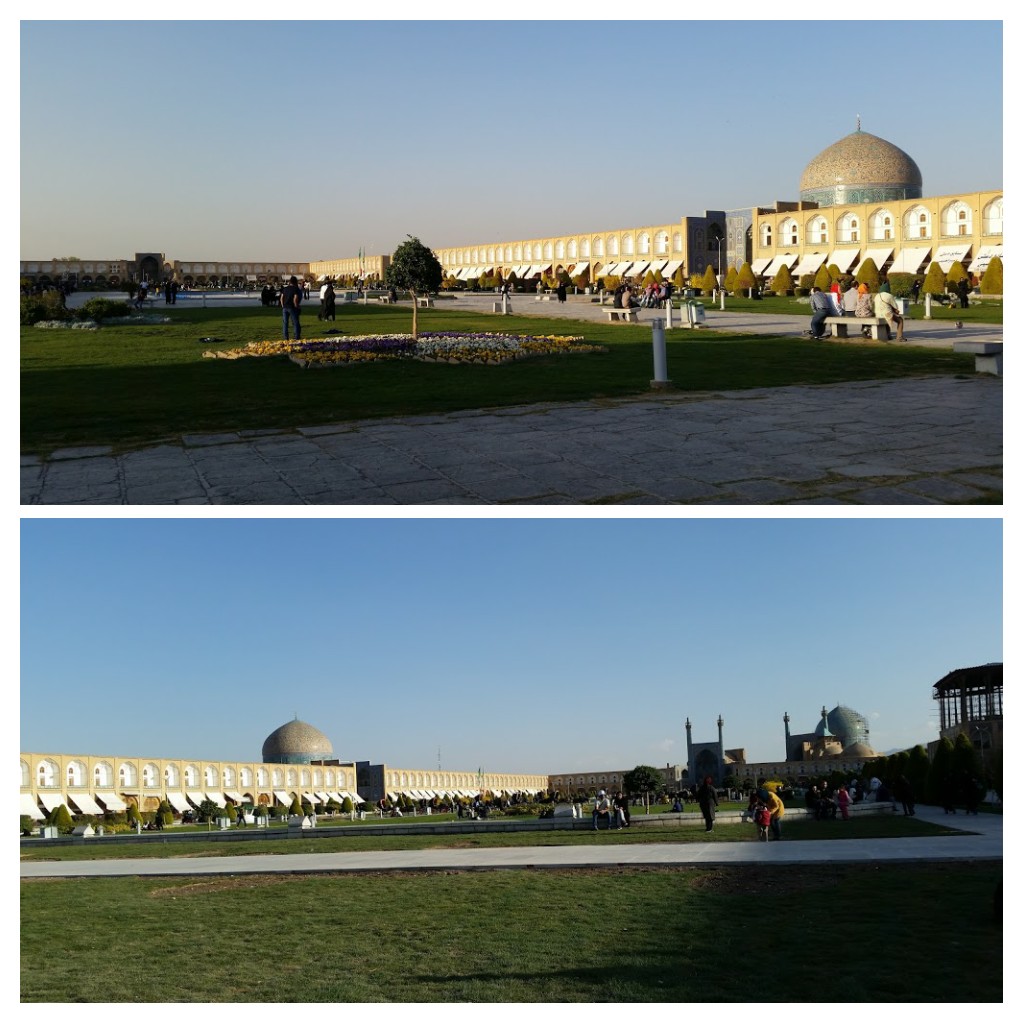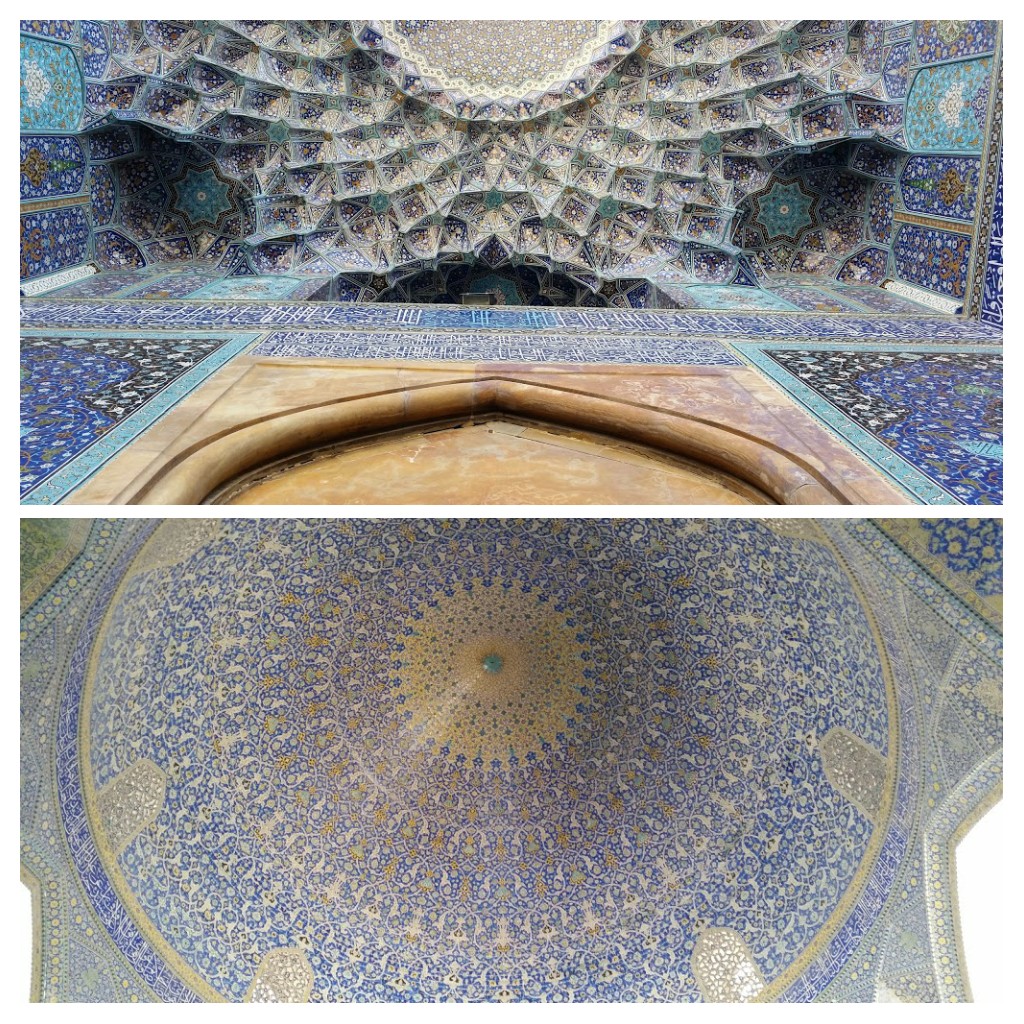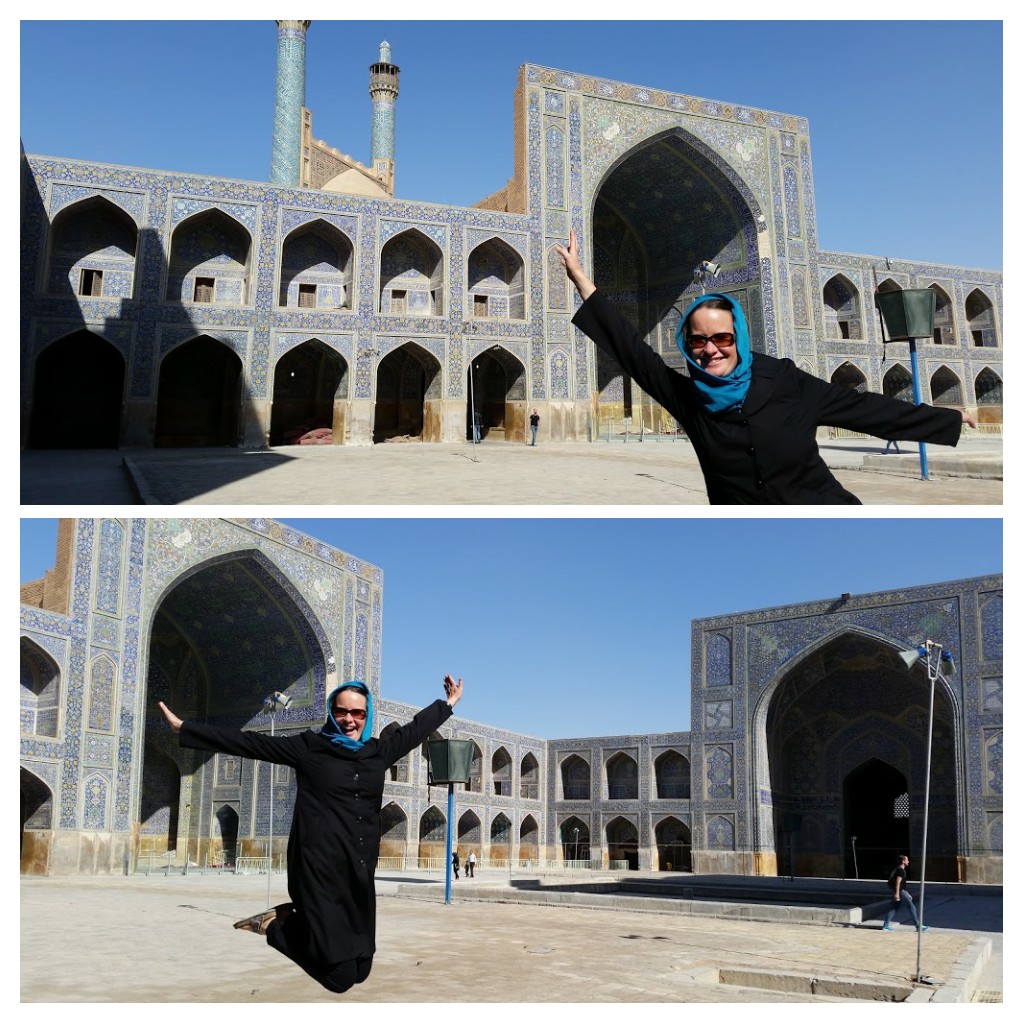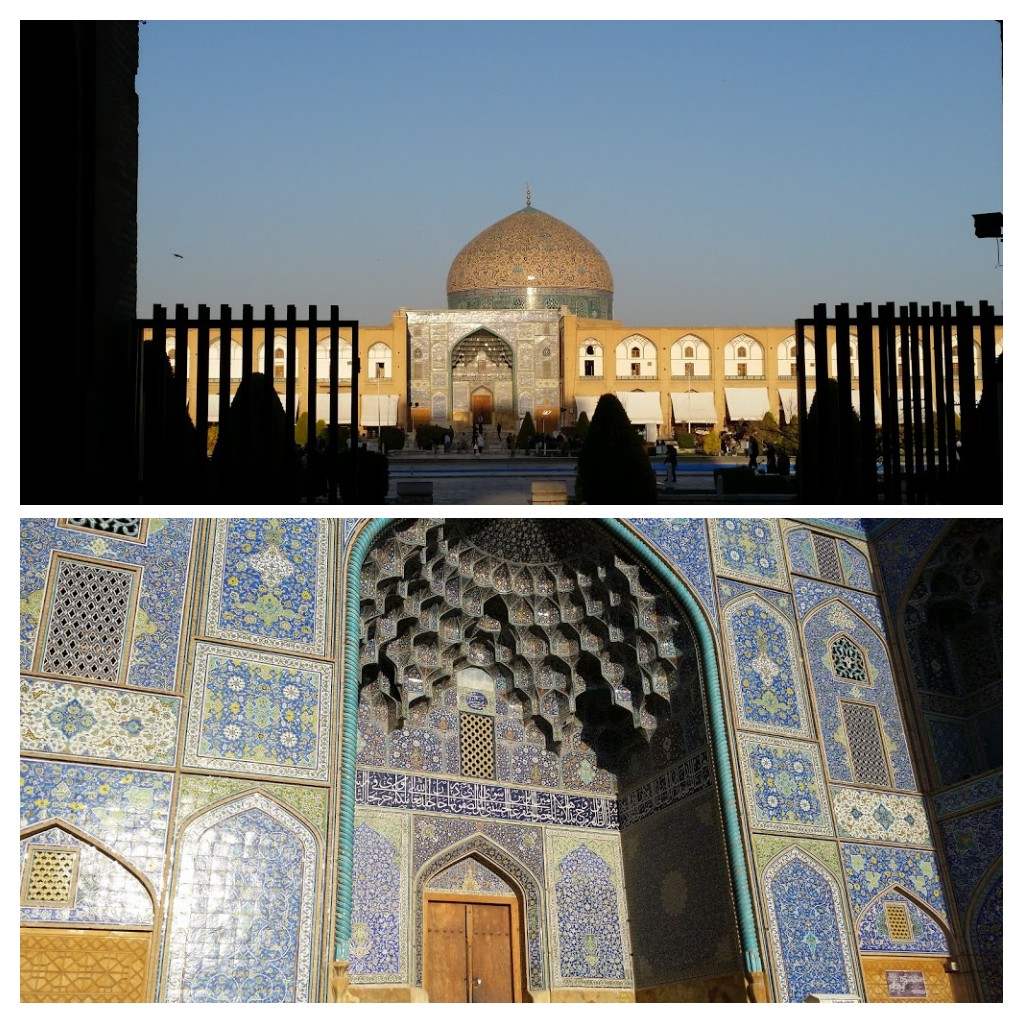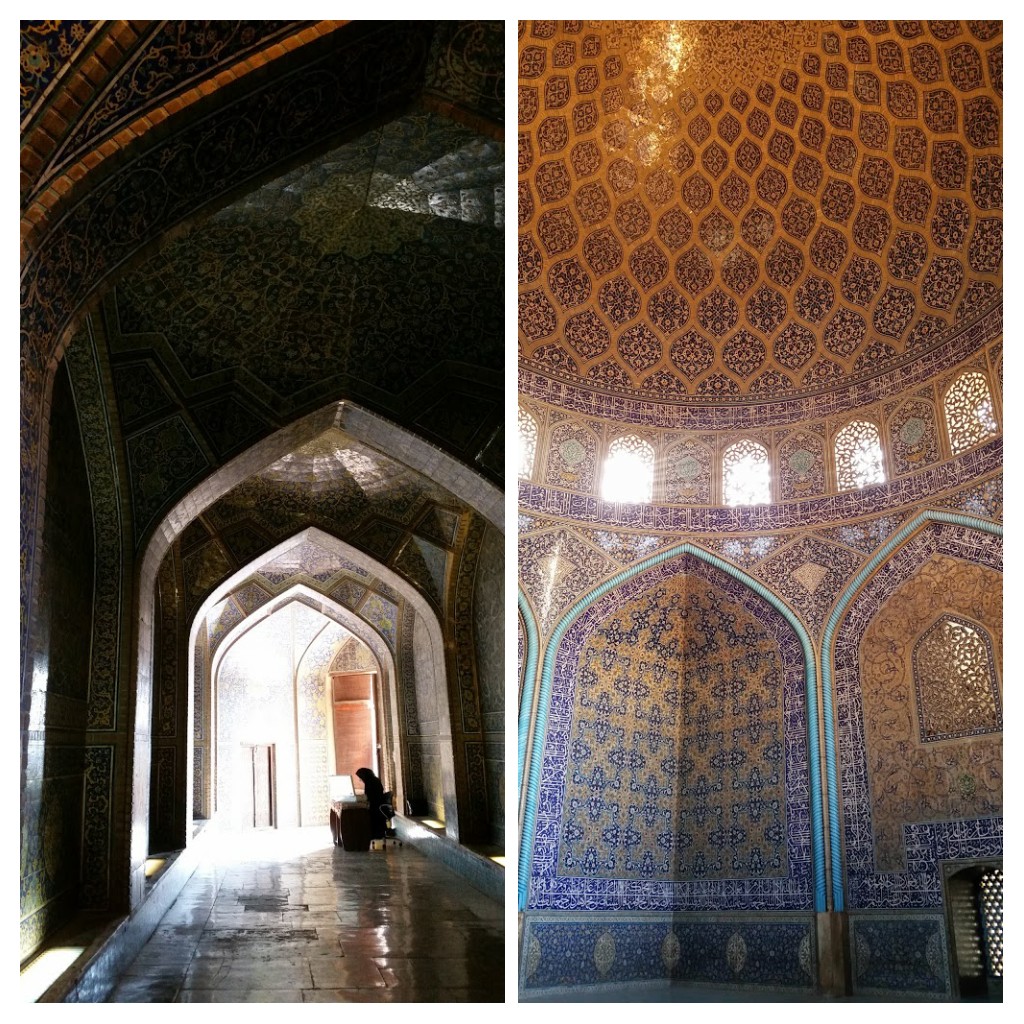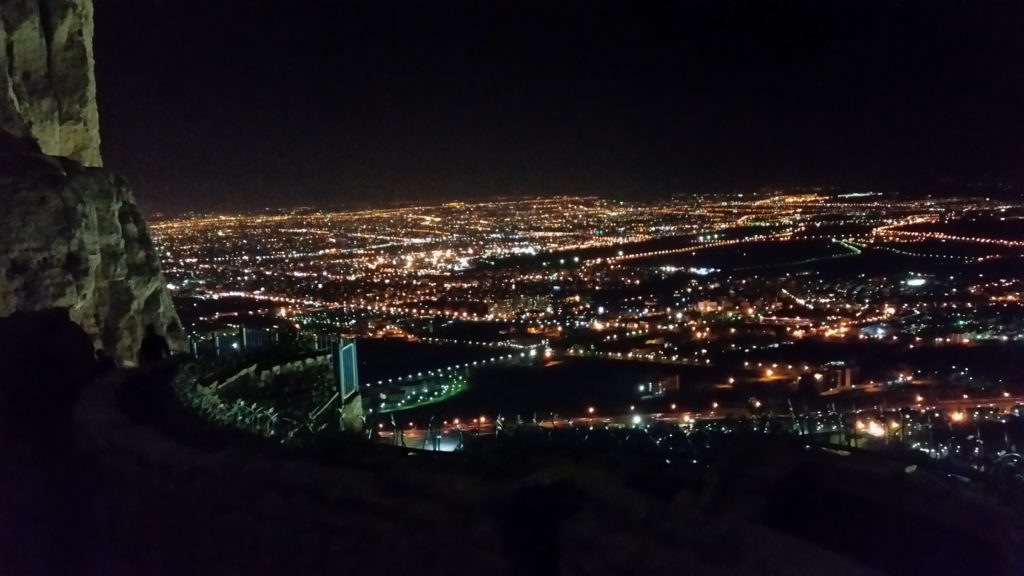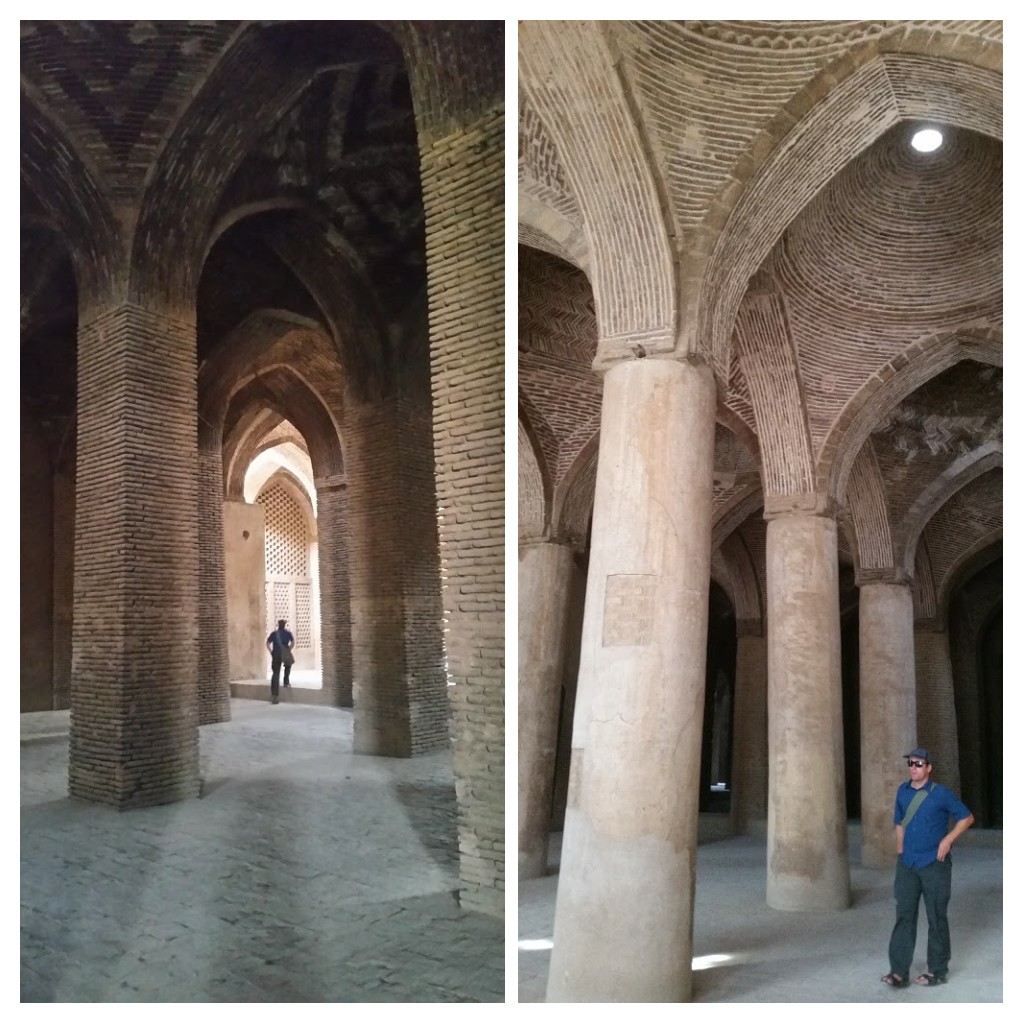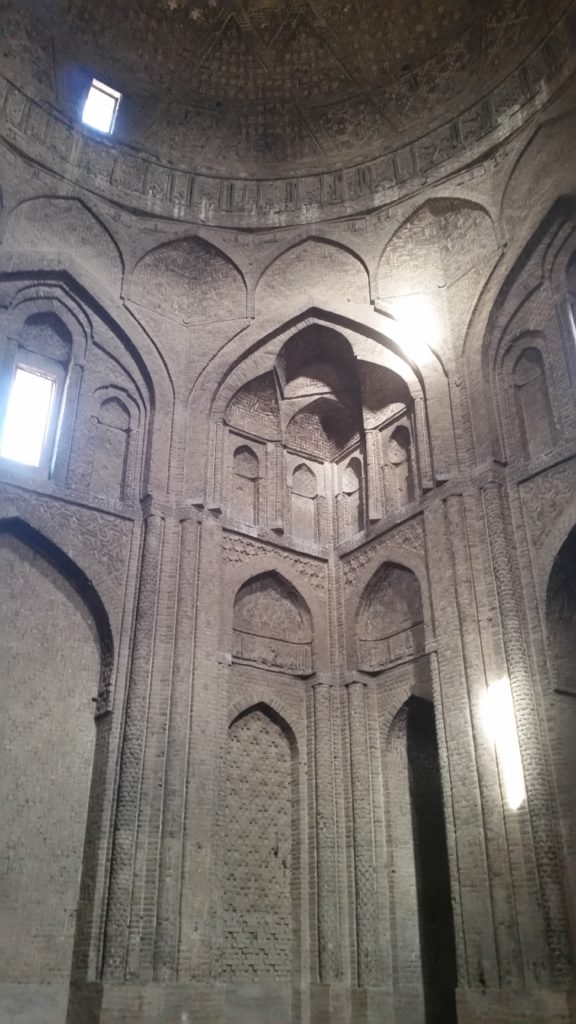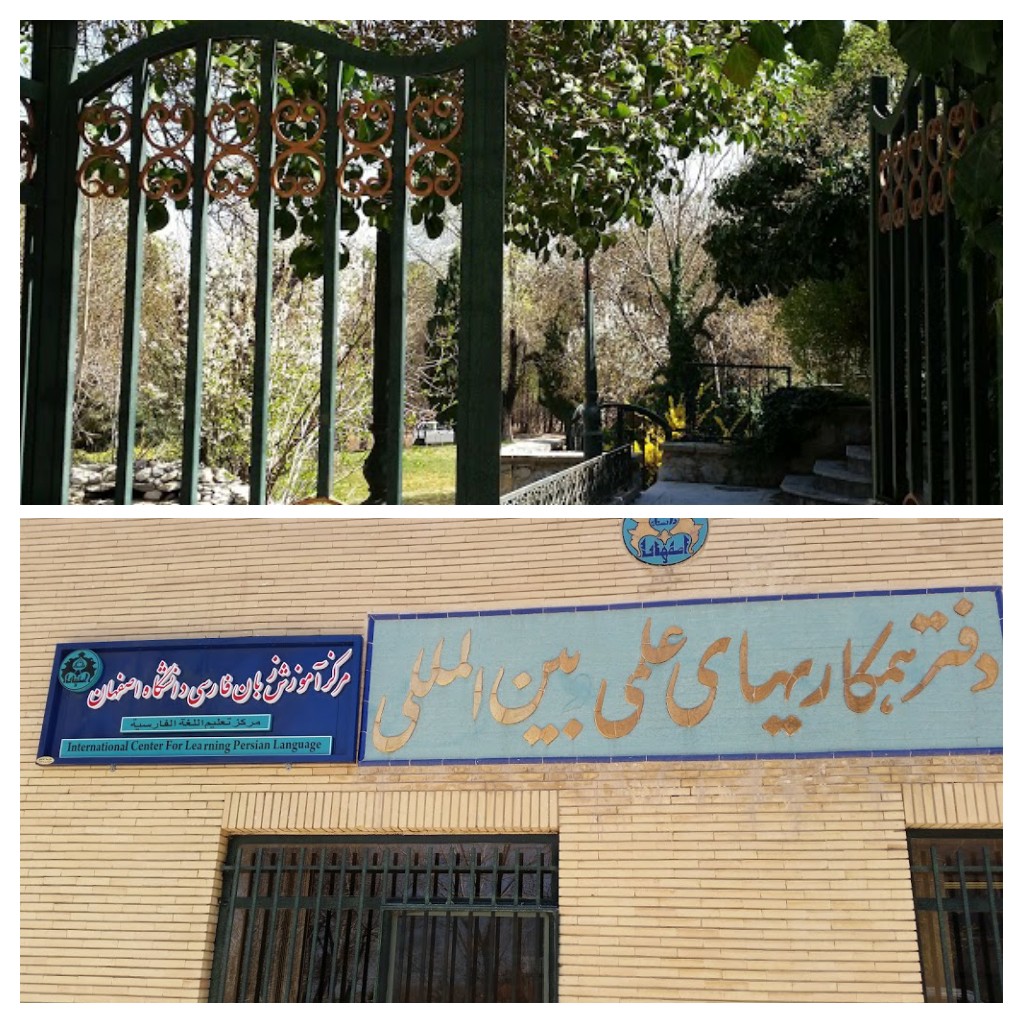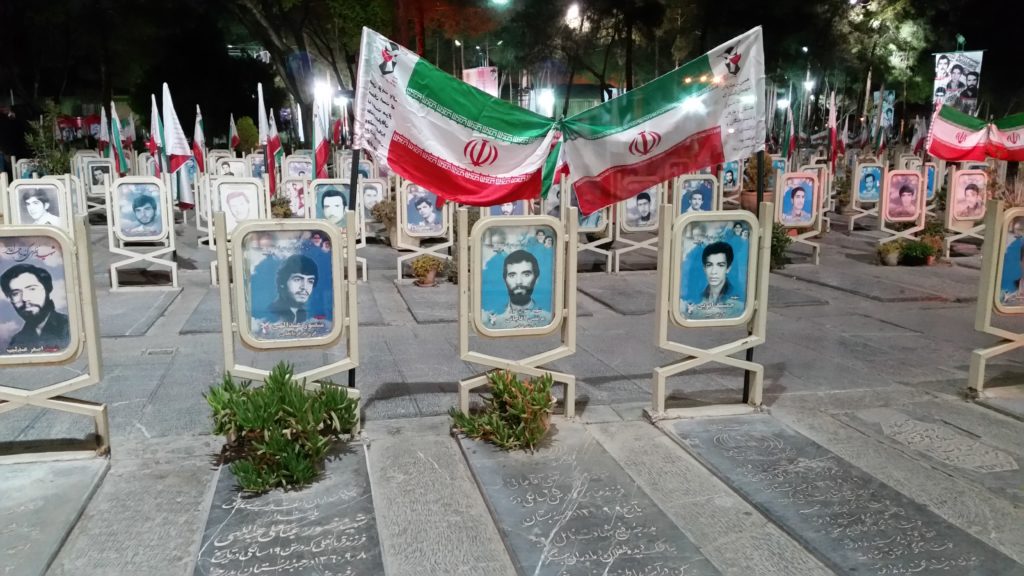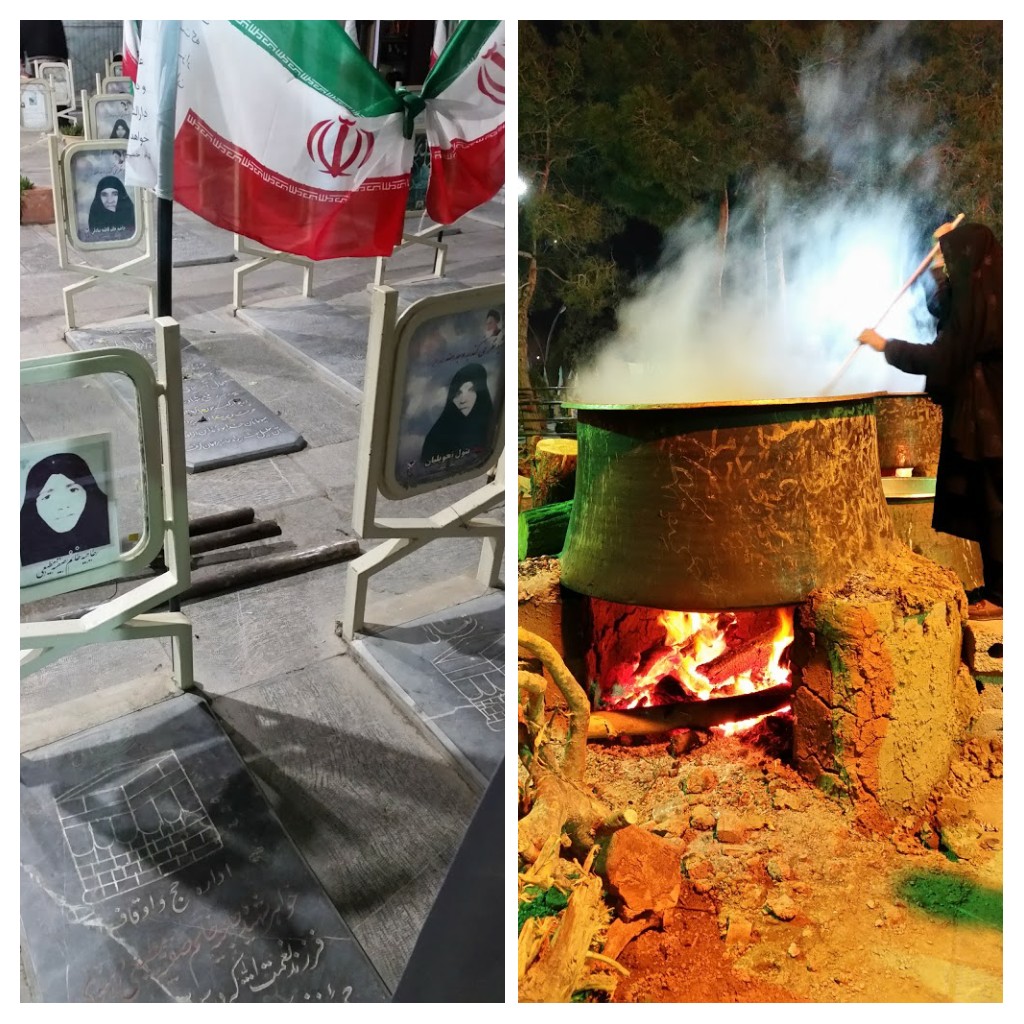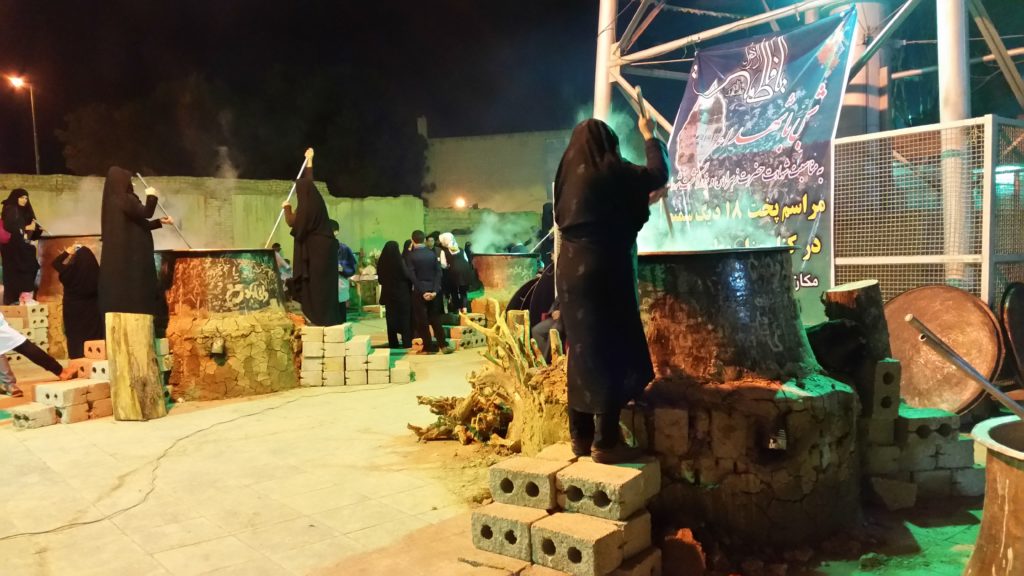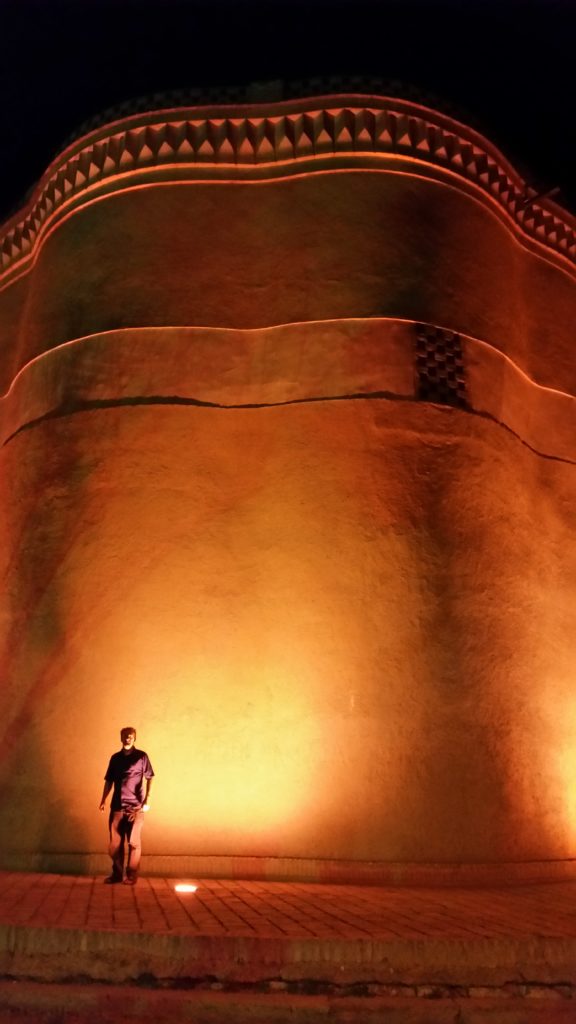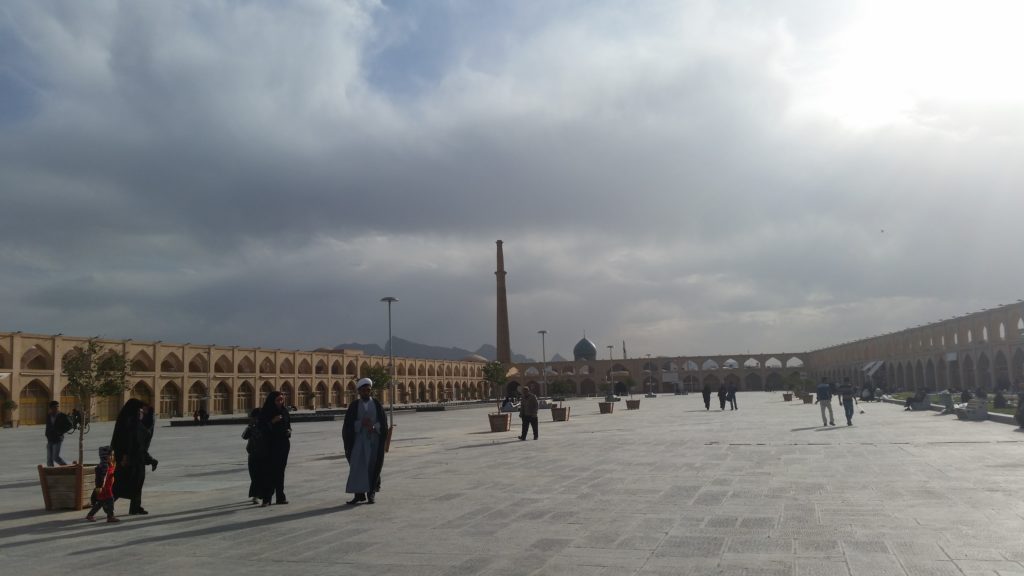Esfahan is home to about 1.8 million people and is Iran’s number one tourist destination – and with good reason. It is a beautiful city and we were lucky to see it when the river was full of water (not always the case!). The first night we were there our lovely couch surf host Mohammad and his sister took us into town where we walked along the Zayandeh River admiring many different bridges, old and new. The Si-o-seh bridge (pictured below) was built between 1599-1602 and served as a dam and a bridge. The oldest bridge (Shahrestan Bridge) is from the 12th century although the pillars are from a much earlier bridge. Seeing some of the eleven bridges that cross the river was a gorgeous introduction to the city and we returned a few nights later with our German friends to soak up the atmosphere around the bridges again and enjoy fabulous singing under Khaju Bridge (Read my post about that here).
Esfahan has some stunning mosques but we actually started our sightseeing at the elaborately decorated Vank Cathedral in Jolfa, the Armenian quarter of the city. More on that in my post about Christian sites in Iran. The church itself was incredible and the attached museum also fascinating.
After a walk through a lovely garden past the Hasht Behesht palace, we visited the Madraseh-ye Chahar Bagh, a school of theology. The architecture and mosaics were beautiful! It was built between 1704-1714, had a lovely courtyard with trees and pools, rooms for the students, a prayer hall, a dome and two stunning minarets.
Mohammad left us to explore the Kakh-e Chehel Sotun Palace on our own and we met up again later. Antony was pretty tired so we had a snooze on the grass in the UNESCO heritage listed gardens (probably not meant for sleeping but we got away with it), then explored the palace. It was originally built in the 17th century but was rebuilt after a fire in 1706. There was no water in the long pool in front of the palace so despite the name meaning 40 pillars (thanks to reflection) this day we could only see the 20 actual wooden pillars.
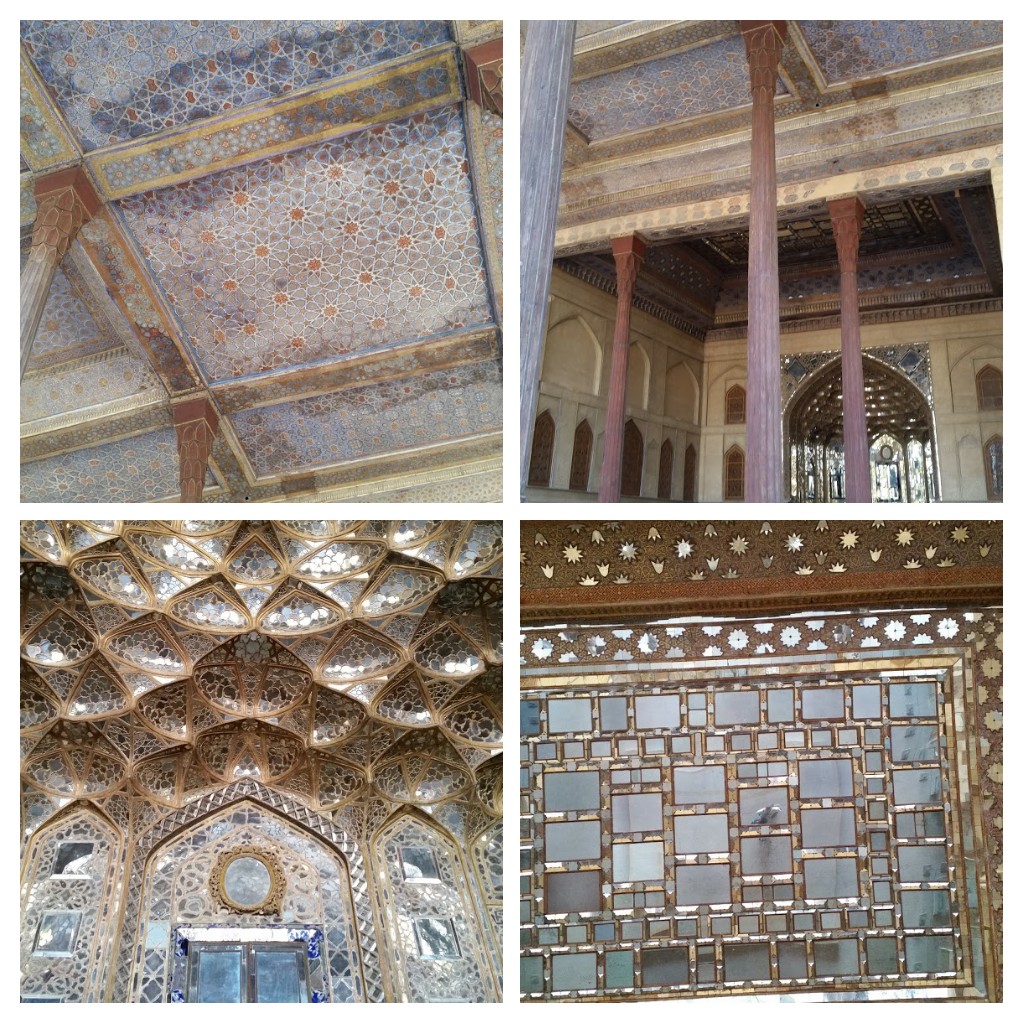
Entrance of the palace, looking up at the wooden ceiling & inlay work. Can you spot us in the reflections?
The palace was built as a pleasure pavillion and reception hall. The Great Hall has some beautiful frescoes that portray court life and some great battles of the Safavid era (1501-1736). The materials used for creating these paintings were all natural. There were mineral paints such as white mud, various types of coloured soils and gold, herbal paints such as walnut and madder and animal paints such as an insect paint called Ghermez daneth. Below you can see Shah Tahmasp receiving Humayun, an Indian prince who fled to Persia in 1543 and on the right of it a battle scene where Shah Ismail battles the infantrymen of Sultan Selim. It is impressive that these works survived the Afghan invasion in the 18th century when they whitewashed the paintings to show their disapproval at such extravagance.
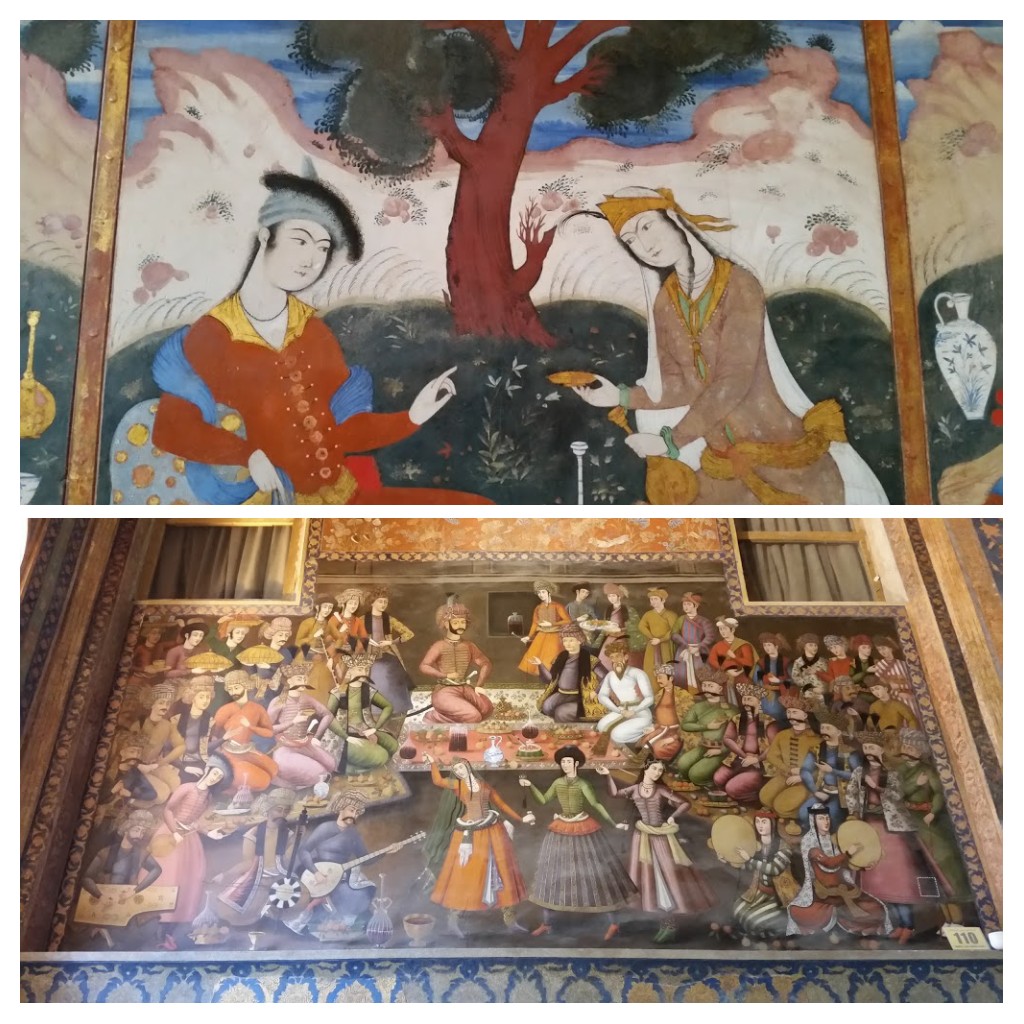
A small painting (above) and a large fresco (below) showing Shah Abbas II welcoming King Nader Khan of Turkestan with musicians and dancing girls. Great Hall, Kakh-e Chehel Sotun.
Later this same day we made it to the Naqsh-e Jahan Square, the second largest square on earth (after Tiannamen Square in Beijing) and a UNESCO world heritage site. Begun in 1602 under Shah Abbas, this square was to be the centrepiece of the new capital Esfahan. It was built to house the finest jewels of the Safavid empire – two incredibly beautiful mosques and the Ali Qapu palace -which when we visited was hiding behind a lot of scaffolding.
We made several visits to this square, to soak up the atmosphere, take in the bazaar which surrounds it and see the two mosques.
The square is dominated at one end by the Masjed-e Shah or Royal Mosque. The architecture is incredible as are the mosaic tiles. It has to be seen to be appreciated but I will give you a little taste with a few photos here. Work on the entrance portal to the mosque began in 1611 and in 1629 the high dome was finished, completing the mosque.
Nothing much has changed since then.
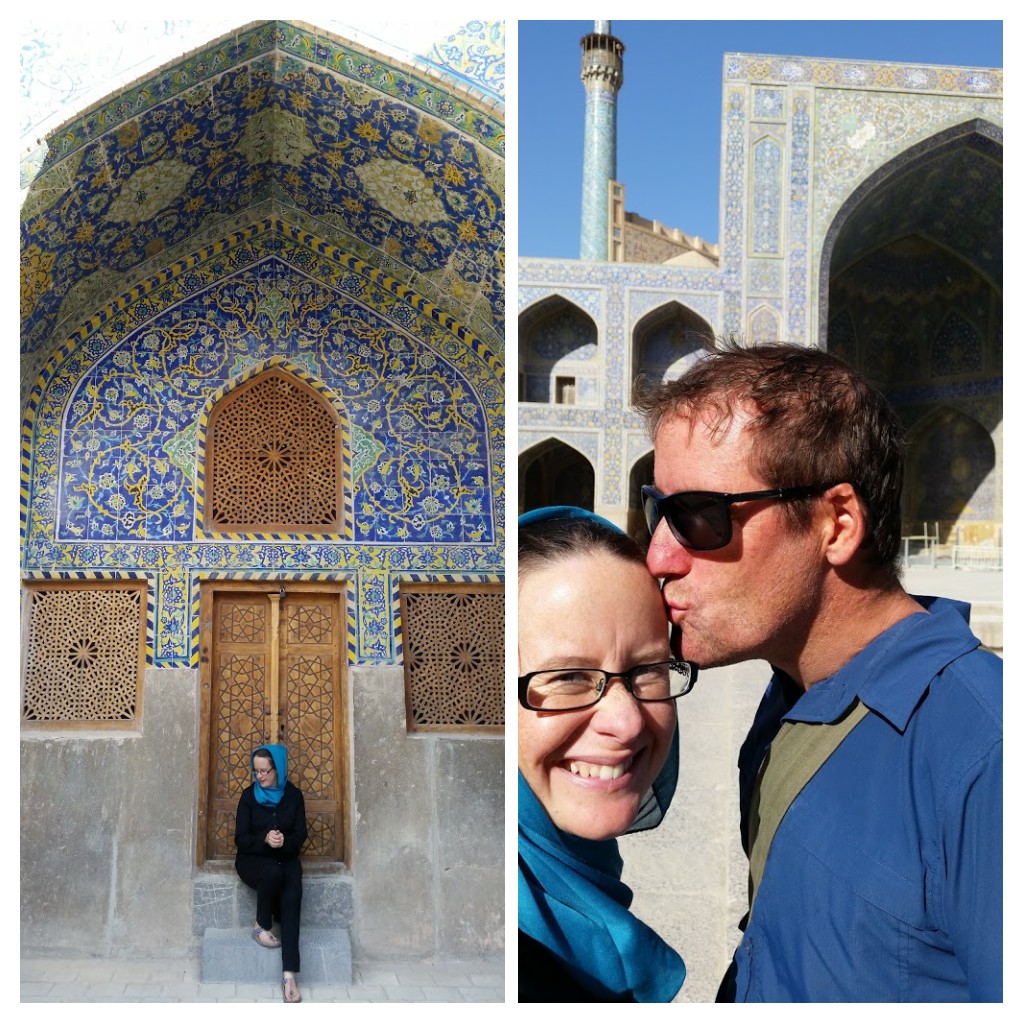
Sitting on the steps to a room in the Madraseh (School of theology) attached to the mosque (L) & sneaking a kiss in the main courtyard of the mosque.Masjed-e Shah, Esfahan.
In the light of the setting sun the dome of the smaller Masjed-e Sheikh Loftollah is just glorious as are the mosaics around the portal, with their intricate floral designs and patterns. Built between 1602-1619, the mosque is unusual in that it has steps up to the entrance, no courtyard and no minaret.
You walk through a twisting hallway which takes you to the prayer hall facing Mecca. This was one of my favourite mosques. I loved sitting on the floor and gazing up as the sunlight filtered through the latticed windows casting beautiful light on the mosaiced walls and the stunning dome ceiling.
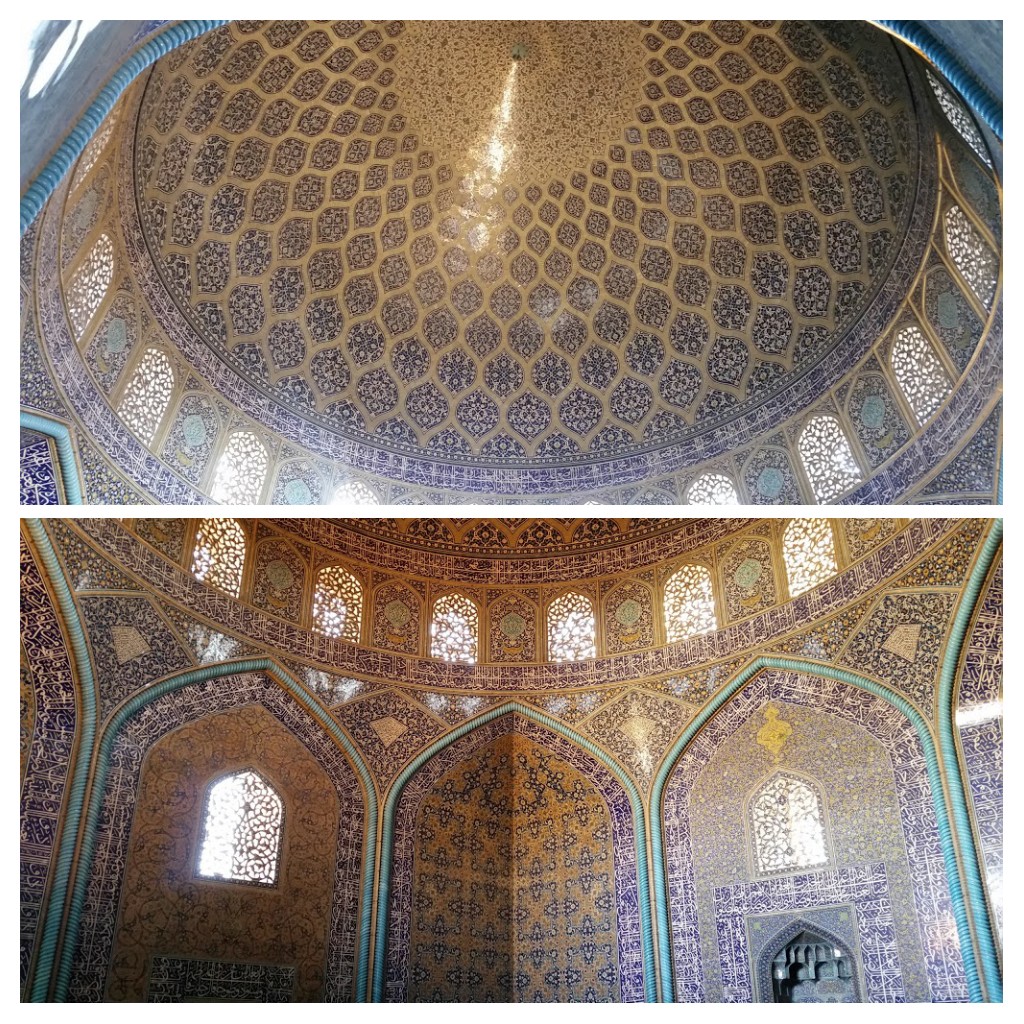
Breathtaking dome, lattice windows & mosaic walls in the Sanctuary, Masjed-e Sheikh Lotfollah, Esfahan.
One evening, together with our host and our German friends, we climbed Mount Soffeh. It was a nice walk and offered a view of the city by night. Mohammad was as ever a great host pulling out cups and drinks to share once we got to the vantage point.
Esfahan is full of incredible architecture and amazing mosques. Antony got a bit ‘mosqued out’ but I loved it! The Masjed-e Jameh or Friday Mosque is the biggest mosque in Iran at over 20,000 square metres and parts date back 1000 years or so. The two large domes are the only part of the original mosque to have survived a fire in the 12th Century. It was rebuilt in 1121 and future rulers enhanced it.
In the main courtyard there is an ablutions fountain that is designed to look like the Kaaba at Mecca, so pilgrims could train before their visit to the real thing, practising the appropriate rituals etc.
Surrounding the courtyard are four iwans – i.e. four vaulted spaces that each have 3 walls and are open on to the courtyard. Each iwan is different from the other, one has two minarets and amazing mosaics, behind which is a grand dome. Another one is brick and less decorative- but still beautiful.
Another iwan has brick pillars and behind it a prayer hall with a forest of pillars. After walking through this forest we arrive in the Taj al-Molk Dome, considered to be the finest brick dome ever built in Persia and apparently mathematically perfect. It has survived dozens of earthquakes over more than 900 years with hardly a blemish.
I took the opportunity while in the city to visit the University of Esfahan to check out the ‘Office of International Scientific Cooperation’ which houses the ‘International Centre for Learning Persian Language’. Our kind host Mohammad helped us find this place – no easy task as the university was huge, but I am so pleased we went there! I hope to study here in the future. They offer 4, 6 or 12 week courses at different levels and provide accommodation on campus. To my ear the Persian language is the most beautiful in the world. I can not wait to learn it!
Mohammad not only helped us see the well-known sites in Esfahan but also took us to see a cemetery for martyrs, i.e. soldiers, male and female, who had lost their lives in the Iran Iraq war in the 80s. There were also some recent graves of soldiers who had died fighting in Syria (Iran supports the Syrian government/ Assad).
I can’t remember the reason but I think at a certain time of year (when we were there) next to the cemetery there are large pots over open fires. All kinds of people are welcome to come and stir the contents of the pot (some kind of food). Perhaps it was some kind of remembering those who had passed away and celebrating life, maybe making wishes for the future? The details are a little fuzzy now (several months later). Tea was shared among those who visited this place and at some point I guess they share the food from the pots. People at the graves shared special food with us and each other too. It was quite an unusual thing to see.
Finally, our trip in Esfahan concluded with a look at one of the city’s 700 mud-brick pigeon towers. These were for collecting the pigeons’ poo which was used as a fertiliser on the many fields of watermelons. Each tower could house 14,000 birds. These days chemical fertilisers do the trick so the towers are no longer used.
Esfahan – you were beautiful and interesting and I look forward to seeing you again in the near future!
